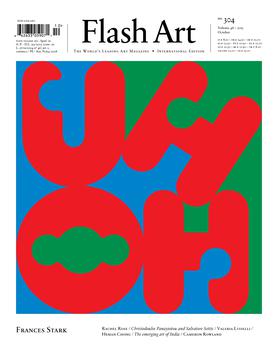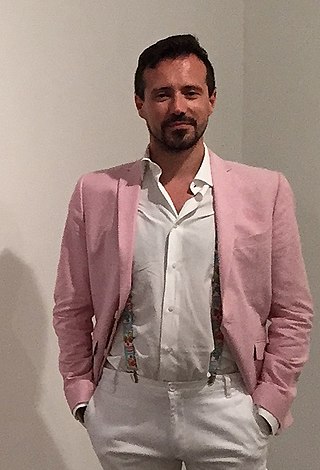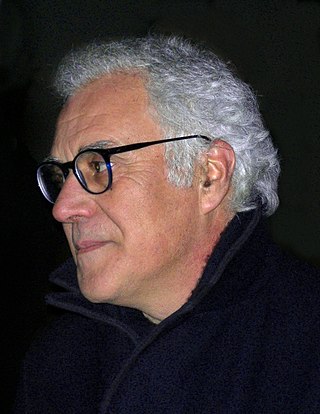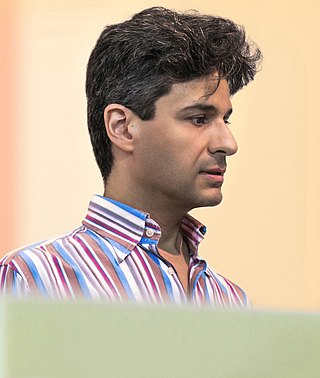Giancarlo Politi (born 1937 in Trevi, Italy) is an art critic and publisher, mainly known for being the founder of Flash Art magazine. [1]
Giancarlo Politi (born 1937 in Trevi, Italy) is an art critic and publisher, mainly known for being the founder of Flash Art magazine. [1]
Politi was born in Trevi, in Umbria. He had a brief spell as an artist and poet before turning to art criticism. In 1965 he moved to Rome, where he started his own art magazine in 1967, a bilingual publication called Flash, and then changed it to Flash Art. In 1970 he moved the headquarters of the magazine to Milan, where he founded his own publishing house, Giancarlo Politi Editore. Politi started publishing art books, exhibition catalogues, and Art Diary, a directory to artists studios, art galleries, art critics and art institutions.
In 1978 Flash Art was split into two separate editions, Flash Art Italia, mostly focused on the Italian market, and Flash Art International, covering the rest of the world. Over the years several attempts were made to publish the magazine in different languages, including Czech, French, German, Russian and Spanish. [2] In 2004 he launched the first edition of the Flash Art Fair.
In 1993, Giancarlo Politi founded the Trevi Flash Art Museum. The museum has hosted several exhibitions featuring international artists, including Maurizio Cattelan, Vanessa Beecroft, Damien Hirst, Miltos Manetas, Piero Golia, Andres Serrano, Paola Pivi, Karen Kiliminik, and Mark Kostabi. In 2005 Politi withdrawn his support, and the museum is currently operating under the name Palazzo Lucarini Contemporary.
In 2001, Giancarlo Politi started the so-called "no-budget biennales". The first one was held in Tirana, Albania, but then, following a disagreement with the local art institutions, he opted for Prague. The first Prague Biennale inaugurated in 2003 and was followed by five other editions as well as three editions of the Prague Photo Biennale.
Politi is married to fellow art critic Helena Kontova. They have a daughter, Gea, who is currently an editor at Flash Art. [3]
Politi has often been a magnet for controversy. In 1972 he announced from the back page of Flash Art that he was selling his services for $1,000 to galleries, museums, and attractive female artists. [4] In 1997 Politi publicly defended Alexander Brener for spraying a green dollar sign on Kazimir Malevich's painting Suprematisme. [5] In 2011 a story emerged about an intern candidate [6] [7] who was mocked and offended after she has been denied a fair compensation. The episode raised some interest in Italy, due to a permanent situation of exploitation of youth work and skills of young graduates. [8]

Domenico "Mimmo" Rotella was an Italian artist considered an important figure in post-war European art. Best known for his works of décollage and psychogeographics, made from torn advertising posters. He was associated to the Ultra-Lettrists an offshoot of Lettrism and later was a member of the Nouveau Réalisme, founded in 1960 by the art critic Pierre Restany.

Flash Art is a contemporary art magazine, and an Italian and international publishing house. Originally published bilingually, both in Italian and in English, since 1978 is published in two separate editions, Flash Art Italia (Italian) and Flash Art International (English). Since September 2020, the magazine is seasonal, and said editions are published four times a year.

Juan Francisco Casas is a Spanish artist and poet. Casas recreates photographs he's taken as large scale oil paintings on canvas, as well as similarly scaled drawings using only blue ballpoint pens. The drawings and paintings are created in photo realistic style most of them as large as 10 feet.

Antonello Matarazzo is an exponent of Medialismo, an Italian movement that postulate different media interaction. He has been engaged in his personal search concerning the visual arts, combining moving pictures with "still" ones, shifting from film-making to paintings and realizing video installations and video projections in galleries, museums and festivals in Italy and outside since 1990.

Mimmo Paladino is an Italian sculptor, painter and printmaker. He is a leading name in the Transvanguardia artistic movement and one of the many European artists to revive Expressionism in the 1980s.

Fabrice de Nola is an Italian-Belgian artist born in Messina (Sicily) in 1964. He introduced the use of QR codes in oil paintings. In 2006, he created the first oil paintings containing texts and web connections to be used on mobile phones.
Helidon Gjergji is a contemporary artist who works in various media.
Helena Kontova is an art critic and curator based in Milan, Italy, where she has been the editor of Flash Art International since 1979. She is also a co-founder and director, together with Giancarlo Politi, of the Prague Biennale.

Amnon Barzel is an internationally known art curator and author.

Peter Angermann is a German painter based in Nuremberg.
Nicola Verlato is an Italian painter, sculptor, architect and musician based in Los Angeles, California.
Luigi Veronesi was an Italian photographer, painter, scenographer and film director born in Milan.

Paolo Consorti is an Italian artist and film director.
Ernesto Treccani was a visual artist, writer and political activist.

Group Normal is a German Czech group of artists formed in 1979.

Alik Cavaliere (1926–1998) was an Italian sculptor. He spent his life researching the meaning of life, freedom, nature, and history. An atheist and libertarian, he didn't believe in any preconceived, final structure of society, the environment, or the universe. Nor did he follow any art movements of his time, although he knew all of them and was temporarily influenced by some. He made his own way, narrating his perceptions with witty irony, through sculptures made up of a wide range of materials, disposed in a chaotic labyrinth which visitors are forced to traverse without being able to find a definitive point of view.

Sergio Sarra is an Italian artist and former basketball player.

Enrico Corte is an Italian contemporary artist. He works in the fields of painting, sculpture, drawing, video art and photography. His exhibitions often include multimedia installations that mix diverse genres and form relationships both with the surrounding area and the viewing public by means of ever-changing combinations. He has lived for extended periods of time in Rome, London, Berlin, Paris and New York, always immersing himself in the contemporary culture and assimilating the tensions of the metropolitan counter-cultures. His works can be found in both private and public collections in Europe and the USA.

Andrea Nurcis is an Italian contemporary artist known for his work in the fields of drawing, painting, sculpture and video art.
Daniele Lombardi was a composer, pianist and visual artist.